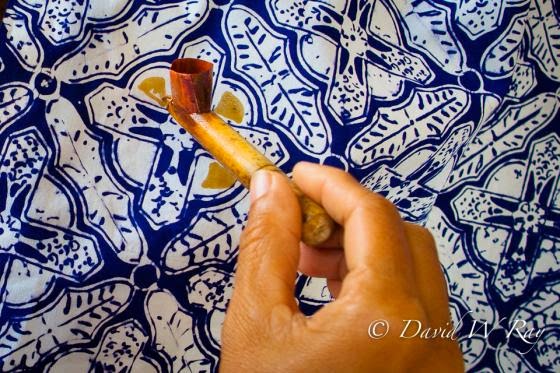AMAZING MY INDONESIA, It would be impossible to visit or live in Indonesia and not be exposed
to one of the country's most highly developed art forms, batik. On your
first visit to a batik store or factory you will undoubtedly experience
an overwhelming stimulation of the senses - due to the many colors, patterns
and the actual smell of batik. Only through repeated visits and a bit of
study will the types of designs and their origins become apparent.
The
word batik is thought to be derived from the word 'ambatik' which
translated means 'a cloth with little dots'. The suffix 'tik' means
little dot, drop, point or to make dots. Batik may also originate from
the Javanese word 'tritik' which describes a resist process for
dying where the patterns are reserved on the textiles by tying and sewing
areas prior to dying, similar to tie dye techniques. Another Javanese
phase for the mystical experience of making batik is “mbatik
manah” which means “drawing a batik design on the heart”
Indonesian Art of Textile
Although the process of decorating cloth through the process of batik
is found in several regions in Africa or India and even in some South
East Asian countries, the batik of Indonesia is unique and unequaled.
Indonesian Batik is made in several regions, but the center of the art
is Central
Java, in cities like Yogyakarta, Solo, Cirebon, Pekalongan and
Indramayu.
The pride of Indonesians to wear batik till the present day has preserve
this art of textile. The beauty of Batik is a tribute to the patience, creativity of the woman
of Java, the main island of Indonesia. Credit should be also given to
men who prepare the cloth and handle the dyeing and finishing process.
Batik
is generally thought of as the most quintessentially Indonesian
textile. Motifs of flowers, twinning plants, leaves buds, flowers,
birds, butterflies, fish, insects and geometric forms are rich in
symbolic association and variety; there are about three thousand
recorded batik patterns.
Video the process of making batik






No comments:
Post a Comment